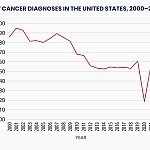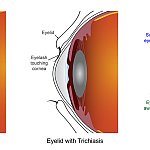
Understanding the risk factors associated with Alzheimer’s disease is a hot topic. With few effective treatments and increased prevalence, taking steps to potentially reduce risk is vital.
The authors of a new study, which appears in the Journal of Clinical Sleep Medicine, investigate links between sleep architecture and brain regions relevant to Alzheimer’s.
Sleep architecture refers to the sleep phases that the brain cycles through each night.
These are the four phases of sleep:
People generally cycle through these four phases
Previous research has shown that aspects of sleep, such as
However, until the latest study, the direct links between specific aspects of sleep architecture and Alzheimer’s — specifically the neuroanatomy associated with this disease, had not been studied in depth.
Alzheimer’s is characterized by brain atrophy. In other words, it shrinks. According to the authors of the new study, some brain regions
Alongside these Alzheimer’s-vulnerable brain regions, other factors are also associated with Alzheimer’s progression — namely, cerebral microbleeds.
As the name suggests, these are small bleeds within the brain and a sign of cerebral small vessel disease, which appears to be linked to Alzheimer’s.
The latest research explores the relationship between specific sleep phases and Alzheimer’s-vulnerable brain regions.
To investigate, they recruited 270 participants who were involved in the
They used polysomnography to assess sleep architecture. Then, they used MRI to look at the anatomical features of the brain (such as brain volume and evidence of cerebral microbleeds) 13–17 years later. They also measured the proportion of slow wave sleep, the proportion of REM sleep, and how often they experienced arousal during the night.
The scientists found that having less slow-wave sleep was associated with a smaller inferior parietal region and cuneus. Similarly, having less REM sleep was linked to a smaller inferior parietal region and precuneus.
After adjusting their analysis for errors, reductions in slow-wave and REM sleep were most tightly associated with atrophy of the inferior parietal region.
Interestingly, measures of arousal during sleep and microbleeds were not associated with the volume of any Alzheimer’s-vulnerable brain regions.
According to the authors, this study is the “first to examine the relationship of sleep architecture with the atrophy of [Alzheimer’s]-vulnerable regions in older adults.”
The results of this study infer that reductions in slow-wave and REM sleep may play a significant role in the reduction of volume in the inferior parietal region.
Earlier research has shown that sleep helps clear toxins from the brain. The authors suggest that this might help explain why reductions in sleep might cause neurological atrophy.
Medical News Today contacted Chelsie Rohrscheib, PhD, a sleep expert, neuroscientist, and sleep consultant at Wesper, who was not involved in this study. We asked why changes in sleep architecture might influence brain atrophy and Alzheimer’s.
“Sleep has many crucial biological functions and is especially important for cell and tissue repair, brain maintenance, learning and memory, cognition, and brain waste clearance,” Rohrscheib explained.
“Most of these functions occur during stage 3 slow wave sleep and REM sleep. All of these processes are crucial for maintaining brain health and reducing the risk of Alzheimer’s disease,” she detailed.
Rohrscheib told us how Alzheimer’s disease is characterized by a buildup of junk proteins in the brain.
“These proteins are normally removed by a waste removal system that occurs during stage 4 slow wave sleep, called the glymphatic system,” she continued. “People who are chronically sleep-deprived and spend less time in slow wave sleep do not clear their brains effectively.”
MNT also contacted Leah Kaylor, PhD, a licensed psychologist who specializes in sleep, who was also not involved in the current research. She delved into a little more detail about how this trash removal service works:
“While sleeping, the brain shrinks, creating more space for cerebrospinal fluid to flood the areas where the brain’s waste products accumulate. This fluid acts as a ‘car wash,’ clearing out the toxins, misfolded proteins, and debris that have built up throughout the day, ensuring that our brain functions at its peak when it is time to wake up.”
Importantly, “these waste products include beta-amyloid, tau proteins, and other substances linked to neurodegenerative disorders,” Kaylor explained.
We asked Kaylor about the importance of these results.
“By examining a cohort over 13 to 17 years, the research provides a longitudinal perspective on how sleep architecture impacts brain structure over time,” she explained. This is important as it “strengthens the evidence for causal relationships.”
Although the results of this study certainly are intriguing, the authors call for more research — this is a small study. Also, they write that their participant group was not particularly diverse, so their results might not be generalizable to other groups.
Whatever the future of this line of investigation, one thing is by now clear: Sleep is essential for good health.
We asked Rohrscheib to provide tips for anyone who struggles to get enough sleep:
She also advises people to speak with a doctor if they experience chronic sleep troubles, as this may be a sign of a sleep disorder like insomnia or sleep apnea.
Kaylor also provided some tips:
This new study adds to our understanding of the relationship between sleep architecture, brain atrophy, and Alzheimer’s disease.
Although we need much more research to understand the precise mechanisms at play, focusing on getting more sleep is always a healthy option.
If you struggle to get to sleep, try this MNT guide that includes 21 ways to get to sleep naturally.





